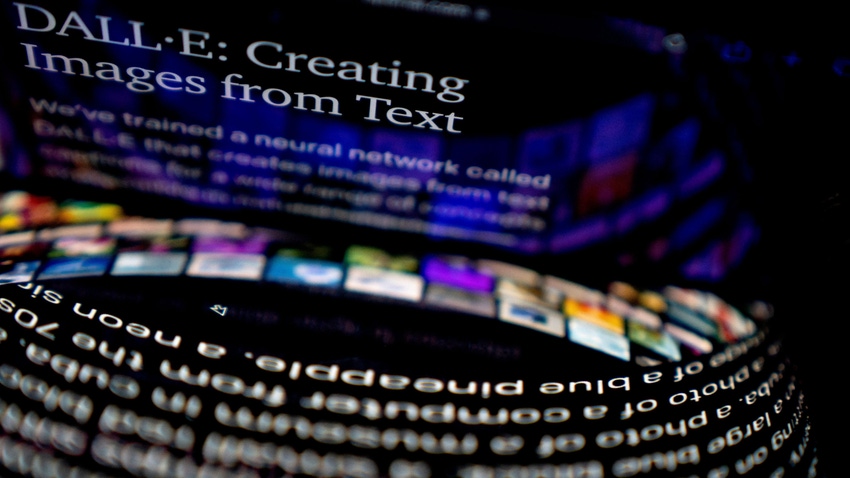Where Generative AI Is − and Isn’t − Transforming Business
An opinion piece from the founder and CEO of Verta, who led a team at MIT to build ModelDB, the first open source ML model management system
March 27, 2023

Since late last year, I have been hearing from many executives in tech and other sectors who are fielding queries from their board members about generative AI and how it would impact the business.
Generative AI has been around for years (and became popular with generative adversarial networks - GANs - in 2014), but more recently we have seen a step change in capabilities as companies like OpenAI have made available massive generative AI models trained on massive datasets. The technology burst into the public consciousness late last year with the wide availability of easy-to-use and powerful tools such as Stable Diffusion, which creates images from text, and ChatGPT, a bot capable of having human-level conversations on a variety of topics.
Each day, new applications of generative AI continue to surface, creating new experiences, frequently in prose and art generation, ranging from the thoughtful to the provocative to the absurd. But beyond the immediate novelty of generating interesting pictures or essays, what are the practical applications for enterprises?
Current applications of generative AI
First, if your business, or your role in the business, involves any kind of content — text, image, video, music — you probably already know that generative AI changed your world overnight. Generative AI provides a useful starting point for any sort of content-based work:
Writers and artists can produce new works more quickly.
Marketers can instantly draft emails and collateral with a few prompts.
Software teams can generate code faster.
Legal practitioners can rapidly draft detailed contract language.
Established companies with tools that support content producers, like Grammarly and Adobe, are already figuring out how to incorporate generative AI into their offerings. Meanwhile, startups with purpose-built tools, like Runway and Jasper, are finding new ways to democratize AI for creative work, allowing users to tap into the power of generative AI’s algorithms for video editing, blog writing and similar tasks.
Beyond these types of creative applications, enterprises are finding specific ways to leverage the technology:
Customer service-oriented organizations are clustering their current chat logs into common themes and patterns, and then automating responses or improving existing chatbots.
Data science teams are creating ‘synthetic’ data for use in training other ML models, which is especially useful in cases where real data is difficult to obtain or could create privacy issues.
Pharmaceutical companies are creating vast numbers of new chemical compounds to accelerate the process of identifying new drug candidates for testing.
Current risks of generative AI
All these applications carry with them certain risks inherent in generative AI that enterprises must consider as they weigh options for incorporating the technology into core processes, especially those that are customer-facing.
Poor content quality: Generative AI is great for producing derivative content but terrible (currently, anyway) at distinguishing good content from bad content. This can be a function of the models’ capabilities or a lack of high-quality training data. In any case, the output can range from hallucinatory to patently false, requiring close human review.
Lack of explainability: These models can be difficult to interpret and explain, making it challenging for the business to understand how the model is making decisions or generating content — let alone explain the model and its outcomes to regulators or an aggrieved customer.
Ethical issues: Similar to the content quality issue, a generative AI model trained on biased data is quite likely to produce biased, misleading or even offensive content as an output.
IP infringement: We have already seen a major stock art site ban works created with generative AI over concerns that models trained on images owned by established creators could be interpreted as copyright infringement.
What will not change
Data science and IT leaders considering how to respond to the generative AI revolution should weigh the above considerations as they think about opportunities to leverage the technology. But they also should consider that little, if any, of the day-to-day ML their teams are doing will change for the foreseeable future as a result of generative AI.
Most pure data science and ML workloads today involve tabular data, with a focus on discriminative models performing classification or regression. Those workloads will not change in the near future because they are not generative in nature. For example, generative AI will not impact the ML that an insurance company is using to accelerate underwriting and claims processing — again, not for the foreseeable future anyway.
Technical considerations for IT leaders
Where opportunities to leverage generative AI do present themselves, IT leaders should bear in mind a few technical considerations:
Generative AI is real-time. A customer using a service chatbot is not going to wait around a day while the model figures out the best response. The answer needs to come instantaneously. This will necessitate very efficient serving inference as a baseline for entry into generative AI, with all the implications for the infrastructure you use to deploy, manage and monitor your models.
The core technology needs to be very powerful. Training alone requires huge computational resources and access to massive datasets. The cost of entry is steep, regardless of whether a company is leveraging its own resources or those of a cloud provider. This challenge may ease over time as computational resources become less costly and as entrepreneurial startups create purpose-built apps that enterprises can adopt off the shelf.
‘Prompt engineering’ is still as much art as science. ‘Prompt engineering’ — figuring out the right set of prompts to input into a generative AI model so that it produces the desired output — remains an imprecise science at best, given our level of understanding about how these models actually work. At present, getting to, say, 80% of the desired result is considered a good outcome, followed by human interventions to deliver the final output. Getting the initial results to 95% or higher accuracy continues to be very challenging from a technical perspective.
Generative AI could create new vulnerabilities around fraud and security. This could come in the form of fake imagery or video used to submit fraudulent insurance claims or impersonate employees to gain access to confidential information, for example. On the other hand, generative AI may also offer better ways to fight fraud, such as by creating synthetic data based on examples of real fraud to augment training datasets for fraud-detection models.
Model management and governance go from good-to-have to must-have. As generative AI models get used in customer-facing applications, enterprises will need to safeguard against poor quality of results and ensuing legal battles by having iron-clad documentation on how the model was generated (or fine-tuned), what evaluation it underwent, and what governance processes were followed when building and choosing to use the model.
Unlike traditional machine learning, where only regulated industries have had to be concerned with model management and governance, generative AI will rapidly bring to the forefront the need for companies across industries to demonstrate the use of Responsible AI practices.
What to do now
So where does all this leave the CEO who is fielding queries from her board about generative AI? If your organization’s ML use cases are traditional analytics-oriented classification and regression, tell the board that generative AI is not rewriting your business yet.
But then ask your direct reports how they plan to leverage currently available generative AI tools:
Ask your head of marketing how she plans to expand and improve outbound campaigns.
Check in with your customer service leader on what is being done to improve your chatbots.
Find out how your product manager plans to improve documentation.
Encourage your engineering team to check out generative AI code assistance to speed up their work.
Enterprises looking for opportunities to incorporate generative AI into their core business could consider dabbling with it, at the hackathon level, until the technology becomes more democratized, i.e., less expensive to support. Or consider buying capabilities from startups with purpose-built tools around specific use cases.
Generative AI continues to advance rapidly, and dozens of generative AI startups are being funded every day. Keep up with the developments and be on the alert for opportunities (and risks) as the technology progresses. But rest assured that, outside the content space, generative AI has not upended your business. Yet.
Read more about:
ChatGPT / Generative AIAbout the Author(s)
You May Also Like


.jpg?width=700&auto=webp&quality=80&disable=upscale)
.jpg?width=700&auto=webp&quality=80&disable=upscale)
.jpg?width=700&auto=webp&quality=80&disable=upscale)
.jpg?width=300&auto=webp&quality=80&disable=upscale)
.jpg?width=300&auto=webp&quality=80&disable=upscale)
.jpg?width=300&auto=webp&quality=80&disable=upscale)
.jpg?width=300&auto=webp&quality=80&disable=upscale)
.jpg?width=300&auto=webp&quality=80&disable=upscale)